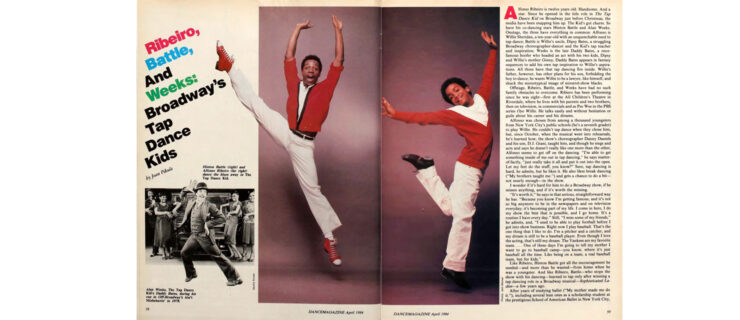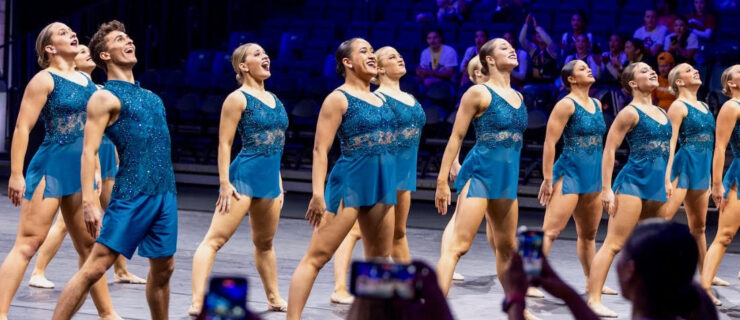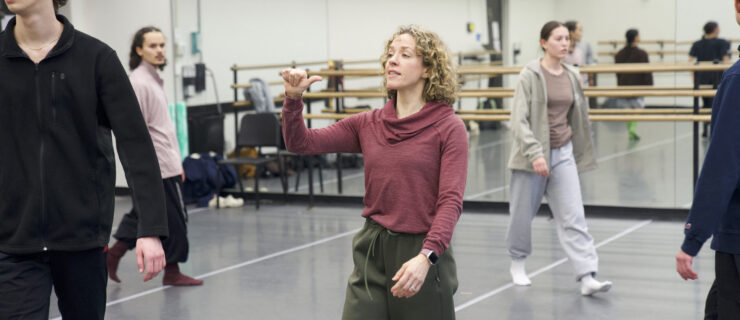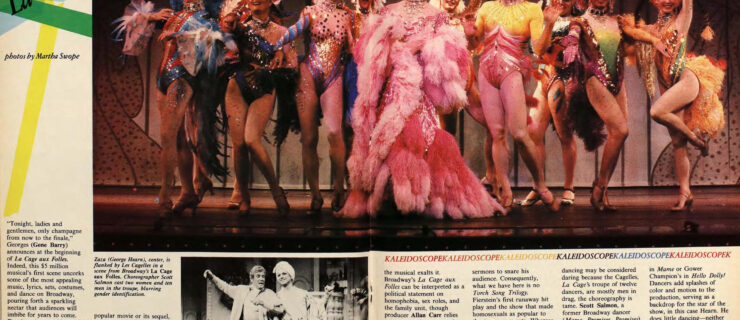Vital Signs
Architectural Endeavors
Hubbard Street Dance Chicago teamed up with the Illinois Institute of Technology’s College of Architecture to create scenic designs in alternative spaces in combination with works by HSDC choreographers. The 12 IIT students submerged themselves in the scene to learn more about the art of dance. They met weekly with the choreographers, dancers, and production staff and took movement classes, observed rehearsals, and attended performances. Two of the resulting works—one by HSDC dancer Alejandro Cerrudo (“On the Rise,” Oct. 2007) and the other by artistic associate Lucas Crandall—are premiering this month and will feature some of the students’ designs. www.hubbardstreetdance.org.
Stream-lined Dance
Merian Soto is known for creating works that explore Latino heritage and culture. But starting last October, Soto branched out (so to speak), and launched the One Year Wissahickon Park Project, which takes place in Philadelphia’s Wissahickon Valley Park. A continuation of her Branch Dance Series, the piece explores the connection between movement, the elements, and consciousness. See the free performance this month, Jan. 27, and Sundays through June 29. www.meriansoto.blogspot.com.
Unusual Jazz
Calgary-based Decidedly Jazz Danceworks combines jazz, African dance, and improvisation with a strong focus on the interplay of live musicians onstage. This month they premiere wowandflutter, with a mix of humor and darkness. Choreographed by Kimberly Cooper, the piece is set to the intense polyrhythmic music of Amon Tobin, with visuals by installation artist David Hoffos. Jan. 31–Feb. 10. See www.decidedlyjazz.com.
Dancing through Hoops
What better way to celebrate the New Year than with a form of dance that is rooted in regeneration? The Kevin Locke Native Dance Ensemble will perform traditional hoop dancing this month at the Southern Theatre in Minneapolis. Using 28 hoops, the dancing represents life emerging from the darkness of winter. The four colors of the hoops—black, red, yellow, and white—represent four human races, four directions, four seasons, and four winds. The ensemble is made up of dancers and musicians from the Plains nations of Lakota, Anishinabe, Comanche, Choctaw, and the Woodlands Nations of Ojibwe and Oneida. Jan. 27. See www.southerntheater.org and www.kevinlocke.com.
Game On
David Neumann/advanced beginner group brings Feed Forward, which premiered last fall in NYC to critical acclaim, to the Walker Art Center in Minneapolis. Neumann, a performer who is at once bold and sly, pushes the boundaries of contemporary dance. Feed Forward is an impulsive, at times uproarious, rendition of an existential crisis laced with sports metaphors. Jan. 31–Feb. 2.
Feud for Thought
And you thought the only show we borrowed from the British was The Office. This month, Dancing with the Stars winner Drew Lachey will host a spin-off dance series shipped straight from the U.K. Dance War: Bruno vs. Carrie Ann pits these two Stars judges (Bruno Tonioli and Carrie Ann Inaba) against one another as each gathers a cohort of the best amateur singers and dancers they can find. Tonioli and Inaba will choreograph every week in various styles. Viewers can vote for who outdid whom, eliminating the groups until the best team is left dancing. See www.abc.com.
Lively Liverpool
More than 30 dance companies converge in Liverpool this month for British Dance: Edition 2008. The four-day showcase, first launched in London in 1992, welcomes dance promoters from across the globe to glimpse the latest in British contemporary dance. Two triple-bill programs on opening and closing nights are open to the public, featuring Scottish Dance Theatre, CandoCo, Richard Alston Dance Company, Shobana Jeyasingh, Henri Oguike, and others. The festival runs Jan. 30–Feb. 2. See www.bde2008.co.uk.
Quick Q & A
Maria Kowroski
New York City Ballet principal Maria Kowroski, to many eyes, had a breakthrough season last spring. Part of it was her stunning performance in Balanchine’s
Bugaku, made for Allegra Kent and Edward Villella in 1963. It’s an odd and startling ballet, designed to look like a Japanese court ritual—possibly of a first sexual encounter. Kowroski, 31, will repeat her performance in the role this month in NYCB’s season. Wendy Perron spoke with her about Bugaku; her foray with Morphoses, the Wheeldon Company; and her change of outlook.
You were amazing in
Bugaku: contained, daring, and sensual. How did you approach the role? Because it hadn’t been done in so long, I was nervous about it. You can go a lot of different ways with it, and I didn’t want to go the wrong way. Allegra Kent takes class at Steps, and I had run into her there. She loaned me a tape of her coaching it. In the video she said, “You have to be shy and almost a little scared but you’re also excited. You let yourself go and then you come back.” I have respect for her, the ballet, and Balanchine. I didn’t want to make it gaudy or grotesque.
She told me that you were exquisite in it.
That’s very sweet.
What was the most difficult part technically?
When you start the pas de deux in your little bikini, you go down into a deep lunge. Because of my flexibility and hyperextension, I could go all the way down, but I couldn’t get up. In one show I almost fell over. Albert Evans, my partner, helped with that. Peter Martins did too; he told me to keep my weight forward, to level it out.
You had a very good season and people say you reached another level of maturity. Do you feel that?
I do. I’ve had a lot happen in my personal life the last few years that’s forced me to grow up. Being a ballet dancer you’re in front of a mirror a lot. I feel judgmental of myself, and I’m a perfectionist. I finally realized: You’re never gonna be perfect, so I stopped being so hard on myself. I decided if I don’t enjoy these years I have left—because they could end at any time—what is the point of doing this anymore?
You also danced with Christopher Wheeldon’s new company last fall. In his ballet,
There Where She Loved, you had an emotional depth that I felt was new in your dancing. How did it feel to be part of his group? Everybody in the group was supportive; the energy was great because everyone wanted to be there. We were there out of love for Chris, love for opportunity. In that ballet, Chris and Ashley Wheater (who also worked on it) gave me ideas to think about. We’ve all gone through love and breakups. Basically it was finding those feelings and letting them surface.
What roles might you do this season at NYCB?
The Siren in Balanchine’s Prodigal Son was my first principal role that I ever did. I prefer the more dramatic roles. The Concert by Robbins is coming back, which is hilarious; the ballet is so genius. It’s a pleasure to be able to be a goofball onstage. “Diamonds” is coming back, which is one of my favorite ballets. Mauro Bigonzetti is doing a new ballet with beautiful music by Bruno Moretti. There are a lot of fun moments and also emotional moments.
Do you have any advice for young dancers?
Ballet is easy to hide behind. When you’ve grown up your whole life being a ballet dancer, that’s who you are. When I was sick two years ago, it was the first time in my life I was Maria; I wasn’t a ballet dancer. I had to figure out who I was. I had gained weight and it was a difficult time. Know who you are and try to be happy with yourself. The more you know yourself, the more depths it’s gonna give you as an artist.




